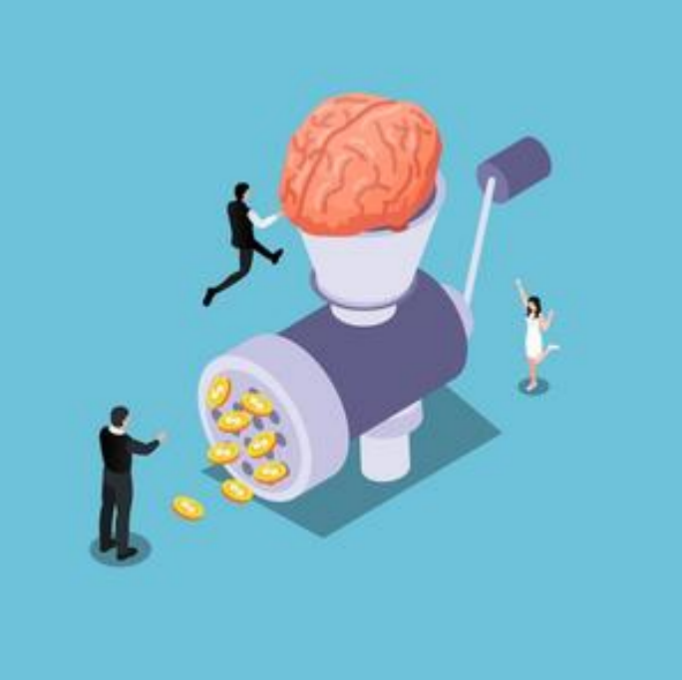The emerging field of neurofinance has uncovered a startling reality about investment behavior—the human brain's default cognitive patterns systematically undermine financial decision-making in ways that cost investors significant returns. Through a combination of functional MRI studies, biometric monitoring, and large-scale behavioral analysis, researchers have quantified how innate neurological processes lead to predictable and costly investment mistakes. The average investor underperforms market benchmarks by approximately 7% annually, not due to lack of information or intelligence, but because of hardwired cognitive mechanisms that evolved for survival rather than capital allocation. This performance gap represents one of the most substantial yet addressable challenges in personal finance.
At the neurological level, the default mode network—a brain system associated with self-referential thinking and mind-wandering—activates precisely when investors should be making rational decisions. This neural pattern promotes emotional attachment to investments, confirmation bias seeking, and narrative building around financial choices rather than objective analysis. Studies at the Wharton Neuroscience Initiative show that when this network dominates during financial decision-making, investors are 300% more likely to hold losing positions too long and sell winners too early. The brain's threat detection system further compounds these issues by triggering disproportionate stress responses to short-term market fluctuations that have little long-term significance.

The neurobiological basis for these poor decisions stems from competing brain systems that evolved in different environmental contexts. The amygdala, responsible for threat response, processes financial losses as existential threats despite their different nature. Meanwhile, the nucleus accumbens, central to reward processing, becomes overactive during market bubbles, creating investment FOMO that mirrors substance craving patterns in addiction. Neuroimaging reveals that market volatility triggers the same neural pathways that responded to predator threats in our evolutionary past, explaining why rational investors make irrational decisions during turbulence.
Advanced neurofinance research has identified specific biomarkers that predict investment mistakes. Pupillary dilation measurements show that increased cognitive load leads to simplified decision-making that ignores important variables. Skin conductance responses reveal subconscious stress reactions to certain asset classes regardless of their actual risk profile. Even subtle changes in heart rate variability can indicate when investors are about to abandon carefully constructed strategies in response to temporary market conditions. These physiological markers provide early warning signs that cognitive biases are overriding rational analysis.
Practical applications of neurofinance are emerging through technology-enabled intervention platforms. Wearable devices can now detect physiological stress responses and deliver just-in-time reminders to maintain investment discipline. Algorithmic trading systems can be programmed to execute when investors show physiological signs of impending biased decisions. Some wealth management firms have begun incorporating biometric feedback into client meetings, using real-time stress monitoring to identify when clients are becoming emotionally attached to suboptimal strategies. This approach represents a fundamental shift from telling investors what to do to helping them understand why their brains want to make poor choices.

The most effective interventions combine neurological awareness with behavioral design. Simple environmental changes like reducing the frequency of portfolio reviews can significantly improve returns by preventing overreaction to short-term noise. Decision journals that require documenting the reasoning behind investment choices create metacognitive awareness that helps override automatic responses. Even something as straightforward as viewing investments through different visualizations—long-term growth charts rather than daily price movements—can engage different neural pathways that support better decision-making.
Financial technology companies are leveraging these insights to build better investment platforms. Robo-advisors now incorporate behavioral nudges that prevent panic selling during downturns. Portfolio visualization tools are designed to activate the brain's planning centers rather than emotional regions. Some platforms have even begun using eye-tracking technology to ensure investors have actually read risk disclosures before proceeding with complex investments. These neuro-aware design principles are becoming standard in next-generation financial technology.

The implications extend beyond individual investors to market structure itself. Understanding the neurological basis of herd behavior explains why markets experience bubbles and crashes that rational models cannot predict. Seeing market participants as humans with biological constraints rather than perfectly rational actors leads to more accurate models of market behavior. This perspective suggests that the most significant improvements in investment performance may come not from finding better investments but from better understanding the investor.
As neurofinance continues evolving, it promises to close the gap between theoretical investment optimality and actual human performance. By recognizing that the biggest investment challenges are neurological rather than informational, investors can develop strategies that work with rather than against their brain's natural tendencies. The future of investment management may involve as much neuroscience as financial analysis, creating portfolios that are optimized not just for market conditions but for the human minds that manage them.






